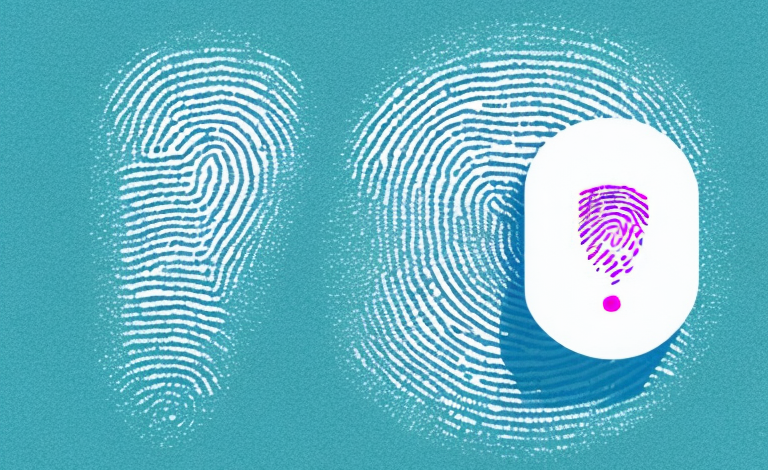With the rise of biometric authentication, fingerprint sensors have become a popular way to unlock our devices, whether it’s a smartphone, laptop, or even a door. But the question arises, can fingerprint sensor be fooled? In this article, we’re going to take an in-depth look at the science behind fingerprint sensors, how they work, the history of fingerprint authentication, the pros and cons of using them, the limitations of the technology, and the techniques used to fool these sensors.
The science behind fingerprint sensors
Fingerprint sensors are an example of biometric authentication, which uses unique physical characteristics such as fingerprints, iris scans, and facial recognition to confirm a user’s identity. Biometrics technology has been around for several years, with police and forensic scientists using it to solve crimes. Fingerprint sensors, in particular, rely on a pattern of ridges and furrows on the fingertips, which are unique to each individual.
When a user places their finger on a fingerprint sensor, the sensor captures an image of the ridges and furrows on the fingertip. This image is then converted into a digital code, which is compared to a pre-existing database of codes to confirm the user’s identity. Fingerprint sensors are becoming increasingly popular in consumer electronics, such as smartphones and laptops, as a more secure alternative to traditional passwords or PINs. However, there are concerns about the privacy and security of biometric data, as it is difficult to change or reset if compromised.
How do fingerprint sensors work?
When a user interacts with a fingerprint sensor, the device captures the image of the fingerprint and analyzes it to create a digital map of the ridges, furrows, and minutiae points. This map is then stored as a unique identifier that can only be accessed by the authorized user. Every time the user tries to unlock their device, the sensor scans their fingerprint and compares it to the stored map. If there is a match, the device unlocks, and the user gains access. If not, the device remains locked.
Fingerprint sensors use a variety of technologies to capture and analyze fingerprints. Some sensors use optical scanning, which captures an image of the fingerprint using visible light. Others use capacitive scanning, which measures the electrical current generated by the ridges and valleys of the fingerprint. Some sensors even use ultrasonic waves to create a 3D image of the fingerprint.
While fingerprint sensors are commonly used for device security, they are also used in other applications such as access control for buildings and vehicles, time and attendance tracking, and even healthcare. In healthcare, fingerprint sensors can be used to identify patients and ensure that they receive the correct treatment and medication.
The history of fingerprint authentication
The concept of fingerprint authentication dates back to ancient Babylon, where fingerprints were used on documents as a way to verify the authenticity of written records. In modern times, the first practical application of fingerprint recognition was in the early 20th century, when fingerprints were first used by police as a way to identify criminals. Later, in the 1980s, fingerprint sensors were developed for commercial use, with laptops and other devices incorporating them as a way to secure their systems. Today, fingerprint sensors are a popular way to unlock smartphones and other devices.
As technology continues to advance, fingerprint authentication is becoming more sophisticated. Some systems now use 3D imaging to capture more detailed information about a person’s fingerprint, making it even more difficult to fake or replicate. Additionally, some companies are exploring the use of biometric authentication, which uses a combination of factors such as fingerprints, facial recognition, and voice recognition to provide even greater security. As our reliance on technology grows, it is likely that fingerprint authentication will continue to play an important role in keeping our personal information safe.
The security benefits of using a fingerprint sensor
The key benefit of using a fingerprint sensor is its high level of security. Unlike passwords, which can be forgotten or hacked, fingerprints are unique to an individual and cannot be replicated. This means that a device secured with a fingerprint sensor is almost impossible to break into, except by the authorized user.
In addition to its high level of security, using a fingerprint sensor also offers convenience. With a fingerprint sensor, there is no need to remember complex passwords or carry around physical keys. Users can simply use their fingerprint to unlock their device or access secure information, making the process quick and easy.
The limitations and vulnerabilities of fingerprint sensors
While fingerprint sensors are considered a secure form of authentication, they also have limitations and vulnerabilities. For example, they can be susceptible to dust, dirt, and damage, and may not work properly under certain conditions, such as when a user has sweaty or wet hands. Additionally, while the chances of someone being able to fake a fingerprint are slim, it is theoretically possible, and techniques for doing so have been developed.
Another limitation of fingerprint sensors is that they may not work for everyone. Some individuals may have skin conditions or injuries that affect the quality of their fingerprints, making it difficult for the sensor to recognize them. In addition, certain occupations, such as construction workers or musicians, may cause wear and tear on the fingertips, which can also impact the accuracy of the sensor. As with any form of authentication, it is important to consider the potential limitations and vulnerabilities of fingerprint sensors before relying on them as the sole method of security.
Techniques for fooling fingerprint sensors
There are several techniques that can be used to fool fingerprint sensors. One method is to create a fake fingerprint, which can be done using materials such as gelatin, latex, or even wood glue. Another method is to lift a fingerprint from a surface where a user has touched it and use it to create a mold. These techniques require a high level of skill and knowledge, but they can be successful in bypassing the sensor.
However, with advancements in technology, fingerprint sensors have become more sophisticated and can now detect fake fingerprints and molds. As a result, newer techniques have emerged, such as using 3D printing to create a replica of a real fingerprint. This method involves scanning a real fingerprint and creating a 3D model, which can then be printed using a 3D printer. This technique is more difficult to detect and can be successful in fooling even the most advanced fingerprint sensors.
The impact of sweat, moisture, and temperature on fingerprint recognition
Sweat, moisture, and temperature can all impact the accuracy of fingerprint recognition technology. If a user’s hands are wet or sweaty, the ridges and furrows of the fingerprint can become blurred or distorted, making it difficult for the sensor to get an accurate reading. Temperature changes can also affect the accuracy of the sensor, with extreme temperatures causing the fingerprint to shrink or expand, potentially changing its shape and throwing off the sensor’s algorithms.
In addition to sweat, moisture, and temperature, the cleanliness of the fingerprint can also affect the accuracy of the sensor. If there is dirt, oil, or other substances on the user’s fingers, it can interfere with the sensor’s ability to read the unique characteristics of the fingerprint. Therefore, it is important for users to ensure that their hands are clean and dry before using fingerprint recognition technology.
Can fake fingerprints defeat the sensor?
While it is possible to create fake fingerprints, the level of skill and knowledge required makes this method an unlikely approach for the average person. Additionally, newer fingerprint sensors incorporate several layers of protection, such as scanning for blood flow, skin elasticity, and even 3D shape recognition. Some sensors also use AI and machine learning algorithms to detect fake fingerprints and alert the system if something appears amiss.
However, it is important to note that no security system is foolproof, and there have been cases where fake fingerprints have successfully bypassed sensors. In such cases, it is often due to the use of low-quality sensors or the lack of proper maintenance and updates. Therefore, it is crucial to invest in high-quality sensors and regularly update and maintain them to ensure maximum security.
Breaking into a phone with a fake or copied fingerprint
Breaking into a phone using a fake or copied fingerprint is difficult, but not impossible. iPhones, for example, have a built-in feature that locks the device after five incorrect attempts, making it more challenging to crack. Android devices have a similar feature, but it can be disabled by the user. However, these measures do not prevent cybercriminals from using malware or other techniques to steal the fingerprint data stored on the device, so it remains important to protect your device from unauthorized access.
One way to protect your device is to use a strong password in addition to the fingerprint scanner. This adds an extra layer of security and makes it more difficult for hackers to gain access to your device. It is also important to keep your device’s software up to date, as manufacturers often release security patches to address vulnerabilities that could be exploited by cybercriminals.
Another option is to use a two-factor authentication method, such as a fingerprint and a PIN code. This ensures that even if a hacker manages to steal your fingerprint data, they still need the PIN code to access your device. Additionally, you should be cautious when downloading apps or clicking on links, as these can be used to install malware on your device and steal your personal information, including your fingerprint data.
How to protect your device from fake fingerprints
There are several steps you can take to protect your device from fake fingerprints. One is to use multifactor authentication, such as combining a fingerprint with a PIN or facial recognition. This makes it more challenging for someone to break into your device using a fake fingerprint alone. Another is to keep your device clean and dry, and to avoid exposing it to extreme temperatures or other conditions that could impact the accuracy of the sensor. Additionally, always ensure that your device’s software and security features are up to date.
Future advancements in biometric authentication technology
As with any rapidly evolving technology, there are likely to be many advancements in the field of biometric authentication. These could include improvements in the accuracy and reliability of fingerprint sensors, as well as the development of new forms of biometric authentication, such as voice recognition, DNA testing, and heartbeat monitoring. However, as with any technology, there is always the potential for new vulnerabilities and challenges to emerge.
In conclusion, fingerprint sensors are a highly secure form of authentication that have become a popular way to secure our devices. While they are not foolproof, the chances of someone being able to break into a device using a fake or copied fingerprint are relatively slim. However, it remains important to take steps to protect our devices and stay aware of new vulnerabilities and advancements in the field of biometric authentication technology.



